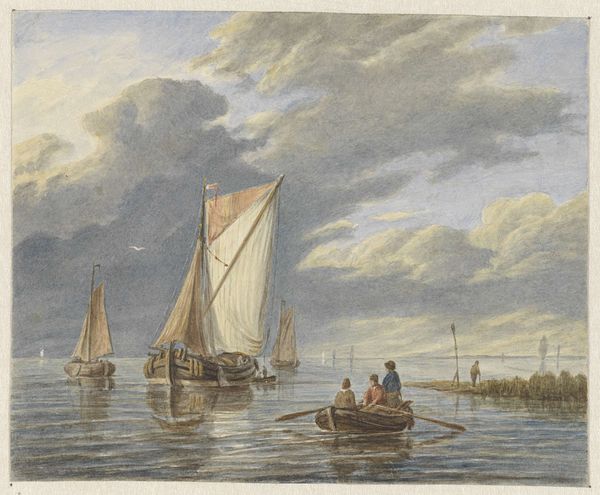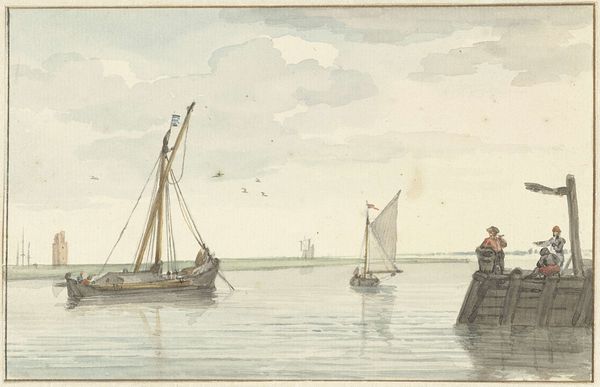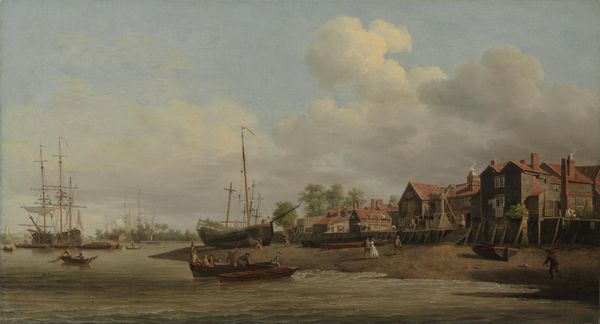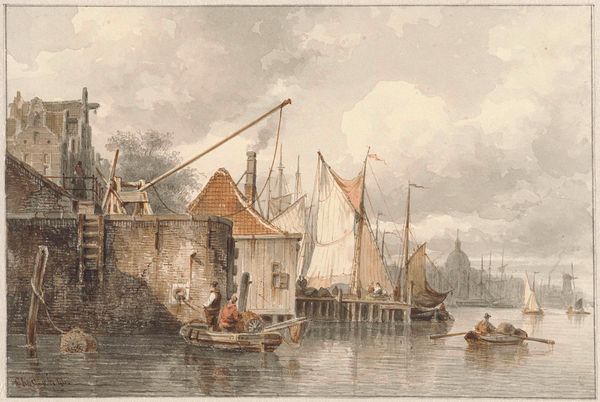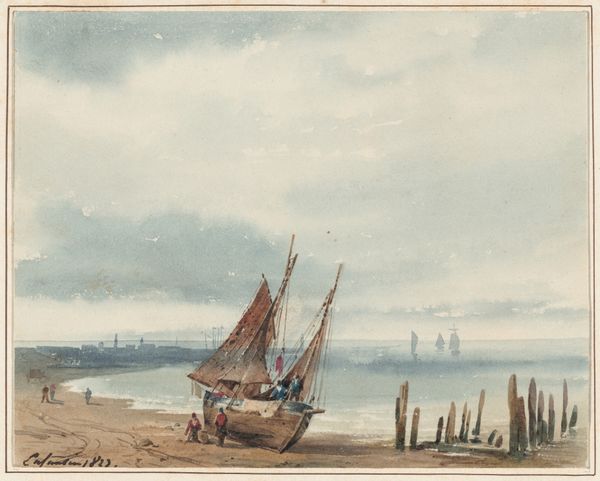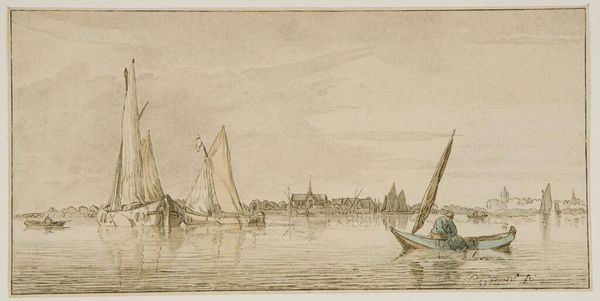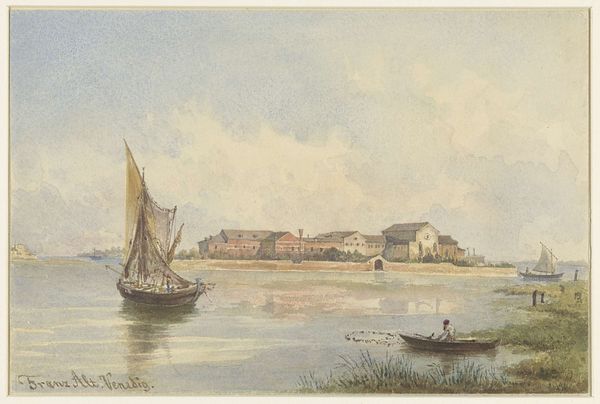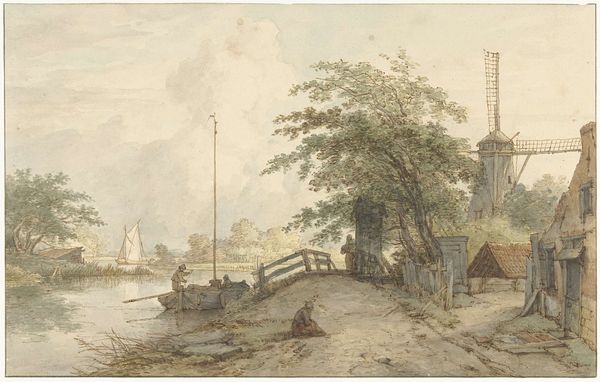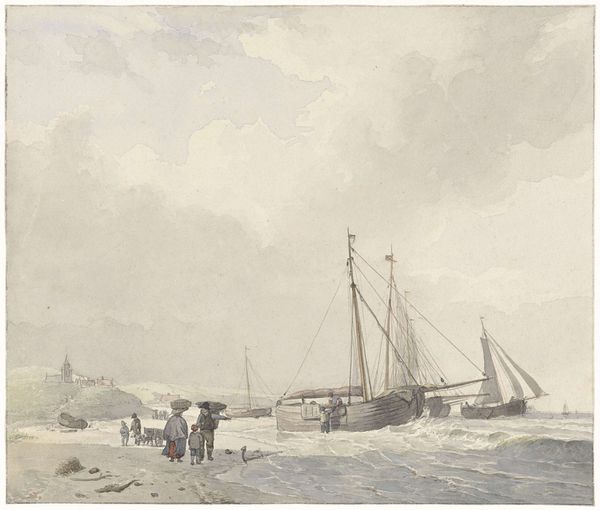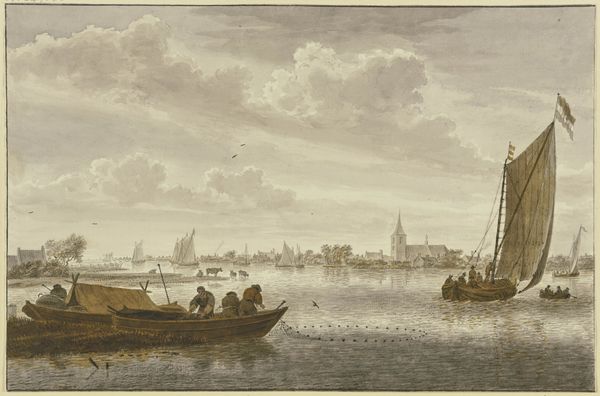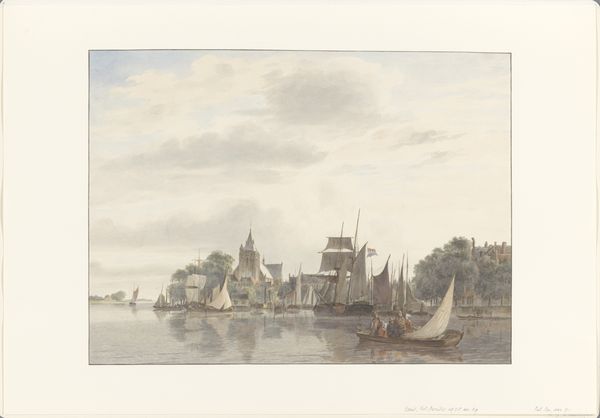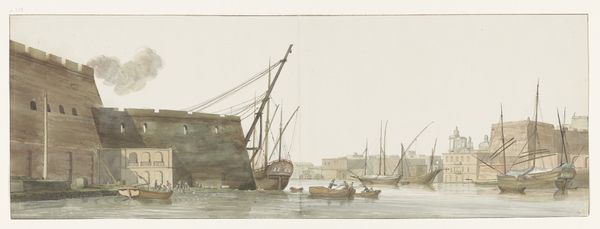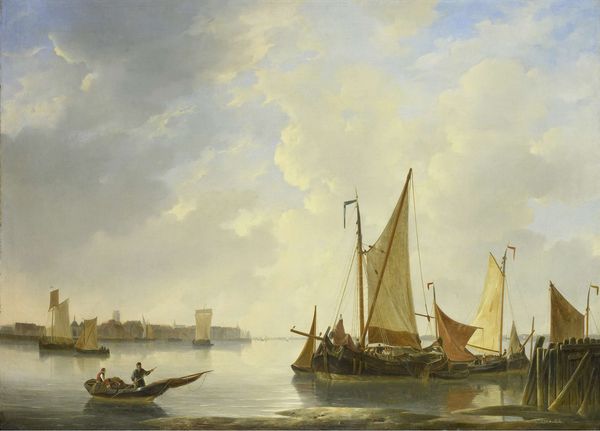
plein-air, watercolor
#
plein-air
#
landscape
#
watercolor
#
romanticism
#
watercolour illustration
#
genre-painting
Dimensions: height 200 mm, width 256 mm
Copyright: Rijks Museum: Open Domain
Curator: We’re looking at “Enkele bootjes op een sloot,” which roughly translates to “A Few Boats on a Ditch,” a watercolour illustration by Jan Hulswit, estimated to have been made between 1776 and 1822. Editor: There's a subdued charm to this piece. The almost monochromatic palette, that diluted blue-grey, evokes a profound sense of calm and perhaps a touch of melancholy. Curator: Precisely. The colour story and Hulswit’s commitment to plein-air execution is what gives it that very atmospheric romanticism. The placement of the boats, distributed in layers, emphasizes depth. Semiotically, they almost represent life's journey. Editor: But that so-called "depth" also hints at a broader system. Note the construction of the boats themselves. These weren't mass-produced, so we’re talking about individual craftspeople, working within the means available to them. How many hours did it take to make these boats and construct those rough buildings? Curator: Yes, but let's focus on the watercolour application and composition, that contrast of horizontal planes with the sail of the sailboat that punctuate the image. The cloud formation is mirrored in the water. I see a deep visual and structural connection. Editor: Agreed, there’s something meditative in this attention to craft. This also suggests an intricate knowledge about available wood materials and labor, connecting high art with folk artistry. And let's not forget these waterways weren't just picturesque, they were vital arteries for transporting goods. Curator: And the windmill—its inclusion gestures towards the romanticism inherent in landscape depictions of this era and serves as a visual anchor, subtly leading the eye. Editor: Right, it underscores a key component of landscape tradition that shows a way of life with manual production—milling grains—all made clear and quite plain by Hulswit's unvarnished strokes. The art celebrates not just the view, but also the labor shaping the landscape. Curator: The piece is richer seen in this context. Hulswit clearly considered formal harmony and meaning. Editor: Indeed. Examining this piece reveals those human connections forged in simple making. The landscape becomes less an object of pure contemplation, and more a tableau vivant of working life.
Comments
No comments
Be the first to comment and join the conversation on the ultimate creative platform.
